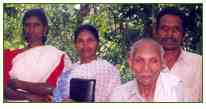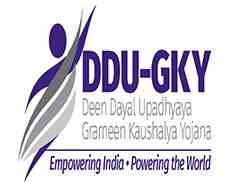Tribals
Tribes in India
HRDS INDIA is introducing a new way of housing technology for the tribes in India. “SADHGRAHA” The Tribal Housing Project aims to construct One million new houses for the homeless tribes across India at a cost of Rs. 53015,29,00,000/- Cement Fibre Panels which is a new strategy for constructing homes to maintain environmental sustainability.
The term "tribe" here means a group of people that have lived at a particular place from time immemorial. Anthropologically the tribe is a system of social organisation which includes several local groups- villages, districts on lineage and normally includes a common territory, a common language and a common culture, a common name, political system, simple economy, religion and belief, primitive law and own education system. Constitutionally a tribe is he who has been mentioned in the scheduled list of Indian constitution under Article 342(i) and 342(ii) .
"Tribals" are found in almost all the states of country. Currently there are between 258 and 540 scheduled tribe communities exists. The strength of these communities varies from 31 people of jarwa tribe to over 7 million gonds. Thus the gonds are big tribal community. Whereas the small communities comprising less than 1000 people include the andamanese, onge, oraon, munda, mina,khond, saora. According to recent study there are mainly 6 tribes in chhatisgarh they are gond, baiga, halba, kamar, bhunjia, korwa. The quality of life of tribal people during pre-independence period was more deplorable and their main occupation was hunting, gathering of wood and forest products and primitive shifiting cultivation. Due to destruction of forest and non availability of proper facilities, tribal people were forced to lead a poor quality of life. After independence with the adoptation of Indian constitution in 1950 special attention was given for the upliftment of the tribal people under the ''article 48'',it was mandatory on the part of the state government to make all efforts to improve economic, social, and educational standard of the tribal people. Due to the welfare programmes tribal communities also made themselves conscious about their own clans upliftment. Now tribles are engaged in struggle for survival. They seek identity, autonomy equality and empowerment. They are moving out of ancestral lands to participate in all institution of state. All tribes or clans have their own unique cultures including language. India is home to a large number of tribes with population of about 70 million. In terms of geographical distribution about 55% of tribals lived in central India, 28% in west, 12% in north-east India, 4% in South India and 1% elsewhere. These communities are actively working to preserve their rich cultures through broad institutional efforts. Tribals constitute 8.14% of the total population of the country, numbering 84.51 million (2001 Census) and cover about 15% of the country's area. The fact that tribal people need special attention can be observed from their low social, economic and participatory indicators. Whether it is maternal and child mortality, size of agricultural holdings or access to drinking water and electricity, tribal communities lag far behind the general population. 52% of Tribal population is Below Poverty Line and what is staggering is that 54% tribals have no access to economic assets such as communication and transport. Several alarming poverty indicators underline the importance of the need of livelihood generating activities based on locally available resources so that employment opportunities could be created. Recognizing this need, the Ministry of Welfare (now Ministry of Tribal Affairs) established an organization to take up marketing development activities for Non Timber forest produce (NTFP) on which tribal men and women spends most of their time and derive a major portion of his/her income. In 1987, the Tribal Cooperative Marketing Development Federation of India Limited (TRIFED) was set up with an aim to serve the interest of the tribal community and work for their socio-economic development by conducting its affairs in a professional, democratic and autonomous manner for undertaking marketing of local tribal products. To achieve the aim of accelerating the economic development of tribal people by providing wider exposure to their art and crafts, TRIBES INDIA, the exclusive shops of tribal artifacts were set up all over India by TRIFED, showcasing and marketing the art and craft items produced by the tribal people. In India tribals are also called Adivasis.
Tribes in Kerala
1. Adiyan
Alternate Name: Adiaya
Population: 9690
Adiyan - The word Adiyan means "slave" in Malayalam. The Adiyans are found in the Wayanad and Kannur districts of Kerala. Most of them are agricultural labourers. It is believed that they were agricultural slaves in the past. During the annual festival at the Valliyurkkavu temple in Mananthavady, Wayand, the Adiyar people used to gather where they were sold and bought by landlords.
2. Aalar
Aalar people are tribals but not listed in the scheduled list of tribes in the state. They are a small number of people found in Malappuram district.
3. Aranadan
Alternate Name: Eranadan
This community seen in Eranadu taluk of Malappuram District- mostly in Vazhikadavu, Edakkara, Aranadankara, Kavalamukkatta, Telppara, Pattakkarimpu and Chokkad. They were nomadic hill tribe and engaged in hunting. Some of the families are settled by the tribal colony colonies constructed by the Government including one near to Chokkad. Population: 196. Literacy rate: 17.2.
4. Cholanaikkan
Alternate Name: Kattunaikkan
Population: (now: 191) 1991 census: 360
The Cholanaikkans are the most primitive and vanishing tribes in Kerala and one of the oldest native communities of Kerala. They are only seen in the Karulai and Chungathara forest ranges in Nilambur in Malappuram district. They are one of the last remaining hunter- gatherer tribes of South India, living in rock shelters or crude huts beside brooks. When they were first contacted in the late 1960s they did not have any clothes or anything outside of a stone-age culture. The outside world came to know about them in the early seventies through a survey published in the Manorama Daily by journalist Mathew Kadalikkad. This had led the people of the plain to pioneer in to the deep forests to meet them. Eventually their lifestyle has been changed but most of them do not leave forest . They speak the Cholanaikkan language, but around half of them can interact in Malayalam. The Cholanaikkan call themselves as 'Malanaikan' or 'Sholanaikan'. 'Shola' or 'chola' means deep thicket in the forest and 'naikan' means king. They are said to be warriors, migrated from Mysore of Karnataka along with a king but had to hide into forests more than a century ago due to the war in the region
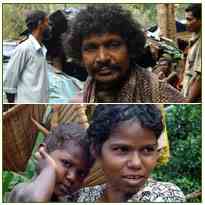
They are generally of short stature, well built strong bodies, fair complexion, round or oval face and curly hair. Cholanaikkans are animists and worship 'ancestral spirits'. They don't have any idols or images but go behind a big tree and whisper something. They do not intermarry with any other tribes.These food gatherers survived on hunting and collection of minor forest products. They ate wild roots, tubers, seeds, fruits and meat. Since the 1970s, they used to come to the plain and exchanged honey, wax and cardamom in exchange of salt, match boxes and clothing. The tribal welfare departments' society started collecting these produces for better prices and began to provide rations and provisions at locations in the forest. The tribe, unlike any other tribes, under the leadership of the Mooppan (Elder) is unwilling to come out of the deep forest but use dress and ornaments, household articles, tools and weapons in their day today life.
5. Iravallan
Alternate Name: Eravallan
Eravallans are inhabitants of the Chittur taluk of Palakkad district. This tribe was originally known as Villu-Vedan (hunters using bows and arrows).The present name may be the corruption of an early name 'Eravan' (beggar) because some of them subsisted by begging. Their total population in Kerala is 3139.
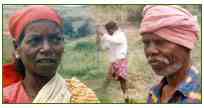
6. Irular
Alternate Name: Irulan
Population: 18,698 Literacy rate: 11.8.
Irulars are seen in Attapady area of Mannarkadu Thaluk in Palakkad District and also seen in Nelliyampathy, Pothuppara, Mayamudi, Palakkapandi, Koonapalam of Chittur Thaluk and Valayar hills. They are engaged in agriculture and cultivate paddy, raggi, dhal, plantains, turmeric etc. Forest produce collection is also a source of income. They are also seen in Tamil Nadu and Karnataka states. The Irular community in Kerala are different in features and occupation from the Irula people seen near Chennai, Tamil Nadu. Read more about Irular at A Peep into the Tribalscape (10 narrative profiles and travelogues)
7. Kadar
Population in Kerala is 1594 Kadars are now found in 15 settlements of Palakkad and Trissur districts; Kuriarkutty, Parambikulam, Parambikulam dam, Thekkady, Kalchady, Cherunelli, Thaliyakallu settlements in Palakkad district, and Anapantham, Vazhachal, Pokayilapara, Porigalkuthu, Vachumaram, Anakayam, Ambalapara (Sholayar) and Malakkapara in Thrissur district. Kadar is listed as a ' primitive' tribe by the government. Kadars are also seen in the Western Ghat regions of Coimbatore district in Tamil Nadu. Kadars were nomadic in nature and used to live in clans of 3 to 10
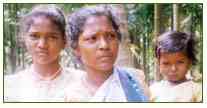
families. They survived mainly by collecting forest produces. They make temporary leaf shelters for their stay in forests for the purpose of minor forest produce collection. Now-a-days they are seen leading a settled life, with the exception of a few families. Thy live in poorly huts made of mud, wooden poles, bamboo and leaves.Kadars were in the habit of using bamboo nodes for carrying water but now a days they use aluminium and earthen pots. The custom of chipping of incisor tooth was common amog them. Kadars are non-vegetarians and their staple food is rice. They are skilled in hunting wild animals and eat most of the animals except buffalo and cow. In every Kadar settlement a headman viz, moopan controls the social customs and tribe administration. The moopans were said to be the servants of the Royal family of Kochi. Kadars are generally monogamous. Marriages between cousins are prevalent and there is no practice of dowry or 'bridal price'; patri-lineal inheritance is dominant. They observe pollution at childbirth, puberty and death. The dead body is buried along with all the belongings of the dead. Though animists they worship Hindu gods along with their ancestral spirits. Before going for gathering forest produces, they appease the spirits by fire walking and other rituals. They celebrate Hindu festivals like Onam and Vishu.
8. Kammara
Kammaras are found in Kasargode district in Kerala. They are blacksmiths by profession. Their total population in Kerala is only 123.
9. Kanikkaran
Alternate Name: Kanikkar Population: – 12725 Literacy: 53.84 % Kanikkars are inhabitants of the area around Agastyakutam and Mahendragiri peaks of the Western Ghats in the Thiruvananthapuram and Kollam districts of Kerala. They are also seen in the Adimali hills of Idukki. They are engaged in agriculture and collection of forest produces. Read more about Kanikkaran at A Peep into the Tribalscape (10 narrative profiles and travelogues)
10. Kani
Kani is a nomadic tribe in Kerala. They were known for familiarizing Kallana, allegedly a cryptic elephant and a herbal medicine known as jeevani. The medicinal properties of the plant called Arogyapacha (Trichopus zeylanicus) were also discovered through them. 11. Kattunaikkan The Kattunaikans and Cholanaikkans are said to be two groups of the same tribe. Cholanaikan habitats are seen in the Karulai and Chungathara forest ranges in Nilambur in Malappuram district. The Kattunaikans are seen in Wayanad, Kozhikode and Malappuram districts. Both these communities are listed as primitive tribes. Total population (Chola Naikan & Kattunaikan )in Kerala is 12,155. Kattunaikans are also called as Ten-Kurumans (Ten means honey) and found in Karnataka and Tamil Nadu also. Kattunaikan means 'king of jungle' and they have very little contact with the main non-tribals. As interior forest dwellers until recent decades, they did not have access to dress items and used bark of trees for clothing. They also used ornaments made of materials available in the forests. They consider the Paniyans as inferior to them and observe pollution against them. They are tall, dark and have curly hair. Kattunaikans believe that they are the descendents of a kingdom which was powerful a few centuries ago. Some of them are educated and send their children to schools through tribal hostels run by the government. Most of them at schools show high aptitude towards modern education. Their huts are made of bamboo, straw and grass. They usually keep footwear outside the house. Leather made of cow-skin is considered as polluting and not used. They are good hunters and are skilled gatherers of forest products such as wax and honey. They use to breed pigs, goats and poultry. They are non-vegetarian in food habits but do not eat beef. Drinking alcohol is occasional. Cultivation is a recent development among the Kattunaikans. The forest Department used to employ them as guards and for labour. Kattunaikans are animists and worshiped trees, rocks, hills and snakes. Due to interaction with the outside communities, they also worship Hindu deities and celestial bodies like sun and moon. The headman, known as muttam has much respect with in the society and has great powers in matters such as marriage and divorce. He also plays the role of priests and holds the right of oracle. They follow the patrillineal rule of succession and used to marry off their daughters even before puberty. They observe any of the three kinds of marriages- by elopement, purchase and by service. In case of purchase, bride price is fixed after negotiation and this can be given in installments even after the marriage. Some use tali (the wedlock badge) made of beads and shells. Exchange of betel nut and chewing pan leaf are symbols observed in the marriage ceremony. Marriage between relatives is in existence. Female cohabited with a non-tribal is considered an outcaste. It is said that marriages and adultery are considered as social recreation. However, they observe pollution at the time of puberty and childbirth. They give little importance to funerals. It is said that, in the past, they used to place the dead bodies on top of rocks or trees to be eaten by animals and birds. Now a-days, they bury the dead body in deep graves with a cellar in the bottom. The body is pushed into the cellar and later filled with soil. It is not clear if they observe pollution after death. They have no firm belief in life after death
- 1. Adiyan Alternate Name: Adiaya Population: 9690 Adiyan - The word Adiyan means "slave" in Malayalam. The Adiyans are found in the Wayanad and Kannur districts of Kerala. Most of them are agricultural labourers. It is believed that they were agricultural slaves in the past. During the annual festival at the Valliyurkkavu temple in Mananthavady, Wayand, the Adiyar people used to gather where they were sold and bought by landlords.
- 2. Aalar Aalar people are tribals but not listed in the scheduled list of tribes in the state. They are a small number of people found in Malappuram district.
- 3. Aranadan Alternate Name: Eranadan This community seen in Eranadu taluk of Malappuram District- mostly in Vazhikadavu, Edakkara, Aranadankara, Kavalamukkatta, Telppara, Pattakkarimpu and Chokkad. They were nomadic hill tribe and engaged in hunting. Some of the families are settled by the tribal colony colonies constructed by the Government including one near to Chokkad. Population: 196. Literacy rate: 17.2.
- 4. Cholanaikkan Alternate Name: Kattunaikkan Population: (now: 191) 1991 census: 360 The Cholanaikkans are the most primitive and vanishing tribes in Kerala and one of the oldest native communities of Kerala. They are only seen in the Karulai and Chungathara forest ranges in Nilambur in Malappuram district. They are one of the last remaining hunter- gatherer tribes of South India, living in rock shelters or crude huts beside brooks. When they were first contacted in the late 1960s they did not have any clothes or anything outside of a stone-age culture. The outside world came to know about them in the early seventies through a survey published in the Manorama Daily by journalist Mathew Kadalikkad. This had led the people of the plain to pioneer in to the deep forests to meet them. Eventually their lifestyle has been changed but most of them do not leave forest. They speak the Cholanaikkan language, but around half of them can interact in Malayalam. The Cholanaikkan call themselves as 'Malanaikan' or 'Sholanaikan'. 'Shola' or 'chola' means deep thicket in the forest and 'naikan' means king. They are said to be warriors, migrated from Mysore of Karnataka along with a king but had to hide into forests more than a century ago due to the war in the region. They are generally of short stature, well built strong bodies, fair complexion, round or oval face and curly hair. Cholanaikkans are animists and worship 'ancestral spirits'. They don't have any idols or images but go behind a big tree and whisper something. They do not intermarry with any other tribes.These food gatherers survived on hunting and collection of minor forest products. They ate wild roots, tubers, seeds, fruits and meat. Since the 1970s, they used to come to the plain and exchanged honey, wax and cardamom in exchange of salt, match boxes and clothing. The tribal welfare departments' society started collecting these produces for better prices and began to provide rations and provisions at locations in the forest. The tribe, unlike any other tribes, under the leadership of the Mooppan (Elder) is unwilling to come out of the deep forest but use dress and ornaments, household articles, tools and weapons in their day today life.
- 5. Iravallan Alternate Name: Eravallan Eravallans are inhabitants of the Chittur taluk of Palakkad district. This tribe was originally known as Villu-Vedan (hunters using bows and arrows).The present name may be the corruption of an early name 'Eravan' (beggar) because some of them subsisted by begging. Their total population in Kerala is 3139.
- 6. Irular Alternate Name: Irulan Population: 18,698 Literacy rate: 11.8. Irulars are seen in Attapady area of Mannarkadu Thaluk in Palakkad District and also seen in Nelliyampathy, Pothuppara, Mayamudi, Palakkapandi, Koonapalam of Chittur Thaluk and Valayar hills. They are engaged in agriculture and cultivate paddy, raggi, dhal, plantains, turmeric etc. Forest produce collection is also a source of income. They are also seen in Tamil Nadu and Karnataka states. The Irular community in Kerala are different in features and occupation from the Irula people seen near Chennai, Tamil Nadu. Read more about Irular at A Peep into the Tribalscape (10 narrative profiles and travelogues)
- 7. Kadar Population in Kerala is 1594 Kadars are now found in 15 settlements of Palakkad and Trissur districts; Kuriarkutty, Parambikulam, Parambikulam dam, Thekkady, Kalchady, Cherunelli, Thaliyakallu settlements in Palakkad district, and Anapantham, Vazhachal, Pokayilapara, Porigalkuthu, Vachumaram, Anakayam, Ambalapara (Sholayar) and Malakkapara in Thrissur district. Kadar is listed as a ' primitive' tribe by the government. Kadars are also seen in the Western Ghat regions of Coimbatore district in Tamil Nadu. Kadars were nomadic in nature and used to live in clans of 3 to 10 families. They survived mainly by collecting forest produces. They make temporary leaf shelters for their stay in forests for the purpose of minor forest produce collection. Now-a-days they are seen leading a settled life, with the exception of a few families. Thy live in poorly huts made of mud, wooden poles, bamboo and leaves.Kadars were in the habit of using bamboo nodes for carrying water but now a days they use aluminium and earthen pots. The custom of chipping of incisor tooth was common amog them. Kadars are non-vegetarians and their staple food is rice. They are skilled in hunting wild animals and eat most of the animals except buffalo and cow. In every Kadar settlement a headman viz, moopan controls the social customs and tribe administration. The moopans were said to be the servants of the Royal family of Kochi. Kadars are generally monogamous. Marriages between cousins are prevalent and there is no practice of dowry or 'bridal price'; patri-lineal inheritance is dominant. They observe pollution at childbirth, puberty and death. The dead body is buried along with all the belongings of the dead. Though animists they worship Hindu gods along with their ancestral spirits. Before going for gathering forest produces, they appease the spirits by fire walking and other rituals. They celebrate Hindu festivals like Onam and Vishu.
- 8. Kammara Kammaras are found in Kasargode district in Kerala. They are blacksmiths by profession. Their total population in Kerala is only 123.
- 9. Kanikkaran Alternate Name: Kanikkar Population: – 12725 Literacy: 53.84 % Kanikkars are inhabitants of the area around Agastyakutam and Mahendragiri peaks of the Western Ghats in the Thiruvananthapuram and Kollam districts of Kerala. They are also seen in the Adimali hills of Idukki. They are engaged in agriculture and collection of forest produces. Read more about Kanikkaran at A Peep into the Tribalscape (10 narrative profiles and travelogues)
- 10. Kani Kani is a nomadic tribe in Kerala. They were known for familiarizing Kallana, allegedly a cryptic elephant and a herbal medicine known as jeevani. The medicinal properties of the plant called Arogyapacha (Trichopus zeylanicus) were also discovered through them.
11. Kattunaikkan
The Kattunaikans and Cholanaikkans are said to be two groups of the same tribe.
Cholanaikan habitats are seen in the Karulai and Chungathara forest ranges in Nilambur in Malappuram district. The Kattunaikans are seen in Wayanad, Kozhikode and Malappuram districts. Both these communities are listed as primitive tribes. Total population (Chola Naikan & Kattunaikan )in Kerala is 12,155. Kattunaikans are also called as Ten-Kurumans (Ten means honey) and found in Karnataka and Tamil Nadu also. Kattunaikan means 'king of jungle' and they have very little contact with the main non-tribals. As interior forest dwellers until recent decades, they did not have access to dress items and used bark of trees for clothing. They also used ornaments made of materials available in the forests. They consider the Paniyans as inferior to them and observe pollution against them. They are tall, dark and have curly hair. Kattunaikans believe that they are the descendents of a kingdom which was powerful a few centuries ago. Some of them are educated and send their children to schools through tribal hostels run by the government. Most of them at schools show high aptitude towards modern education. Their huts are made of bamboo, straw and grass. They usually keep footwear outside the house. Leather made of cow-skin is considered as polluting and not used. They are good hunters and are skilled gatherers of forest products such as wax and honey. They use to breed pigs, goats and poultry. They are non-vegetarian in food habits but do not eat beef. Drinking alcohol is occasional. Cultivation is a recent development among the Kattunaikans. The forest Department used to employ them as guards and for labour. Kattunaikans are animists and worshiped trees, rocks, hills and snakes. Due to interaction with the outside communities, they also worship Hindu deities and celestial bodies like sun and moon. The headman, known as muttam has much respect with in the society and has great powers in matters such as marriage and divorce. He also plays the role of priests and holds the right of oracle. They follow the patrillineal rule of succession and used to marry off their daughters even before puberty. They observe any of the three kinds of marriages- by elopement, purchase and by service. In case of purchase, bride price is fixed after negotiation and this can be given in installments even after the marriage. Some use tali (the wedlock badge) made of beads and shells. Exchange of betel nut and chewing pan leaf are symbols observed in the marriage ceremony. Marriage between relatives is in existence. Female cohabited with a non-tribal is considered an outcaste. It is said that marriages and adultery are considered as social recreation. However, they observe pollution at the time of puberty and childbirth. They give little importance to funerals. It is said that, in the past, they used to place the dead bodies on top of rocks or trees to be eaten by animals and birds. Now a-days, they bury the dead body in deep graves with a cellar in the bottom. The body is pushed into the cellar and later filled with soil. It is not clear if they observe pollution after death. They have no firm belief in life after death
12. Kochuvelan Kochuvelans are inhabitants of the Ranny Forest Range in Pathanamthitta, Kottayam and Idukki districts. They were known to be the priests (Moopanmar) who perform the religious ceremonies of Ullada community.
13. Koraga Population: 1579 Koraga people, listed as primitive tribe, are found in Kasargod and Majeswaram. The Koragas are believed to be the ancestors of a defeated dynasty, which was driven to forests and subsequently became slaves to the mighty. According to another legend, they allegedly were considered as a mixed offspring and were looked down upon with contempt and their future generation was named as Koraga. According to the State's Tribal Research Institute the Koraga population during 1998 is only 1330. A good number of Koragas are also seen in Karnataka, the neighboring State. The Koragas are seen mostly in rural areas and due to their unhygienic way of life all other communities used to observe untouchability with them. They have very little interaction with other communities. It is said that in earlier days they used to remove carcasses and ate the flesh of dead animals. All of them were slaves until the State banned slavery through the Bonded Labour Abolition Act. The Koragas speak a language of their own which resembles to Tulu and Kannada. The Koragas who live in plain areas are called Kuntu Koraga and those found in forests are named as Sappu Korag. Both these groups observe different dress code. Kundu Koragas are seen only in Kerala and the Sappu Koragas are found in Karnataka State. The Kuntu Koraga further has two sections- Badiyadika and Pulikoor. A large section of the Koragas is engaged in basket making. Some resort to begging while a few to agriculture or minor forest produce collection. Koragas were experienced in capturing crocodiles and used to eat its flesh. Usually the Koraga huts are thatched with grass or leaves, with open sides. Now most of them live in houses provided by government. Traditionally they used to worship sun and a few other gods, but the younger generation is interested in worshipping the Hindu deities.
14. Koda Alternate name: Kota Kotas are mainly found in the Nilgiris district of Tamilnadu, but a few families live in the Malappuram, the bordering district of Kerala. Population in Kerala: 36.
15. Kudiya Alternate name: Melakkudi Total Population - 597 Literacy 38.31 % They are seen in the Kannur and Kasaragode district of Kerala District. The main occupation is agriculture. The rest of the tribe is found in Coorg (Kodaku), the neighbouring district in Karnataka.
16. Kurichiyan Alternate name: Kurichchan, Kurichiyar Total Population – 22,215 Literacy 28.06 % Kurichiar people are found in Wayanad and some parts of Kozhikode districts in Kerala. They were warriors and had served the king Pazhassi Raja with utmost honesty and courage during his fight against the British. They were archery and martial arts. Though they live on the hills in isolation, the architecture of their house and other artifacts suggest of a recent past life in the mainstream. They are considered as the highest tribes among Adivasis and strictly follow un-touchability (ayitham). According to a legend this warrior caste of the mainstream community lost a war and they had to go the jungles as "vanavasis" (jungle dwellers). The Kurichiyas are divided into matrilineal clans known as kulam. The Kurichiyas worship their deceased ancestors, called Nizhal (shadows) along with a few other deities unique to their tribe and worshipped by Hindus

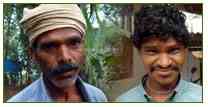
17. Kuruman
Alternate name: Kurumar.
Subgroups: Urali Kurumar,
Then Kurumar Mullu Kuruman, Mulla Kuruman, Mala Kuruman Total Population – 23,444 Literacy 38.69 % They are seen in Wayanadu district close to forests but live good houses. All the different communities among them are jointly listed as Kuruman in the scheduled tribe list of the government. Traditionally Vetta Kurumar are hunters, Then Kuruamar are honey gatherers, and Urali Kurumar, agriculturists. Urali Kurumar are settlers and live in pukka/ good houses and engage in agriculture. They also collect honey and other forest products as they continue to live in the forest land. Nowadays they are in to all kinds of jobs and manual labour, wood cutting, climbing trees, working at tea and coffee plantations and in forest department.
18. Kurumban
Population: 1820
Kurumban is considered as a ' primitive' tribe in the list of scheduled tribes of Kerala. Their hamlets are found in both sides of the Bhavani River in Attapady area of Palakkad district. Most of them are still food gatherers and also do shift cultivation. Near some of their colonies in the interior forest they cultivate ganja plants. Their staple food is used to be ragi but now-a-days they also use rice. Consumption of liquor is common among them. The language they speak is close Kannada but also converse in Malayalam and Tamil. The clan system is of very high order among Kurumbas. Old Kurumbas wear very minimum clothes and young women wear rings, chains, and ear ornaments made of brass, tin, aluminium, plastic and glass. Traditional houses of Kurumbas are built with bamboo, mud and wild-grass. They are made as linear structures with compartments, each to be occupied by a marital family. Usually two to three such families live together in such houses. Temporary huts are also made in the middle of cultivated land for guarding crops and destroyed after harvest. They use bamboo, reed, and cane to make carrying vessels and baskets. Now- a-days they use vessels made of aluminium and pottery for cooking. A hamlet is called Ooru and the head of the ooru is called Oorumooppan who administers the socio-political unit. He represents the Ooru in interacting with Government Officials and settling inter-hamlet disputes, assisted by other social functionaries like " Bhandari, Kuruthalai and mannookaran'. The bhandari serves as a treasurer to social functions and the mannokaran is a traditional agriculture expert. The society is divided into eight clans and various social functionaries are from different clans. Kurumbas worship both their traditional gods and the Hindu deities. They are famous for which-craft, and magical performances, and traditional herbal medicines. The families are nuclear and they observe matrilineal inheritance. Kurumbas have marriage relationships with the Mudugar, another major tribal community found in the lower valleys of Attapady hills. They observe pollution around life-cycles. The dead are buried on the third day of the death.
19. Malapandaram
Total Population - 2122 Literacy 35.4 %
Mala Pandarams are found in Achancoil, Pathanapuram, Naduvathumoozhy and Mannarappara forest ranges in the Pathanamthitta and Kollam districts of Kerala. They live by hunting and collection of forest products.
20. Malappulayan
Alternate Names: Hill Pulaya, (Mala Pulayan, Kurumba, Pulayan, aravazhi Pulayan, Pamba Pulayan)
Total Population -3092 Literacy 45.9 %
Malappulayan are seen in Chinnar and Marayur area (Devikulam taluk) of Idukky district. Main occupation of Kurumba pulayar are goat farming and collection of forest produces, Karavazhi Pulayan are engaged in cultivation. It is believed that they had migrated from Madurai (Tamilnadu). Near Marayur there is a Malappulayan community settled in a colony built by the government. They cultivate sugarcane which is popular in the area.
21. Malavedan
Alternate name: Malai Vedan
Total Population -2435 Literacy 44.53%
Mala Vedans are found in the Pathanamthitta, Thiruvanathpuram and Idukki districts in Kerala. The main occupation is hunting and collection of forest produces.
22. Malakkuravan
Population - 584 Literacy 49.38 %
The Malakkuravan's are found in Thiruvananthapuram, Pathanamthitta, and Kottayam districts. They are engaged in hunting, collection of honey and agriculture. Women are engaged in fire-wood collection, fortune-telling and palmistry.
23. Malasar
Population - 967 Literacy 12.47 %
Malasar people are seen in Palakkad and Thrisur districts. This once nomadic people are now they are settled in colonies, provided by the goverment. Maha Malasar is a subcommunity among them who are found at some parts of Thekkedi in the Parambikulam forests.
24. Malayan
Alternate names: Malayan, Nattu Malayan, Konga Malayan
Population - 2395 Literacy 39.51 %
The Malayans are mainly found in the hilly regions of Palakkad and Thrissur districts of Kerala. Most of the Malayans at present are agricultural workers and some of them involved in collecting forest produce. Those who speak Malayalam are called as Nattumalyan and those who speak Tamil are known as Malayan. A few of them are now in government services also. Their total population in Kerala is 7542.
25. Mala Arayan (Malayarayar)
Total Population – 24,949 Literacy 73.24 %
Mala Arayans are found in Meenachil and Changanasseri Taluks of the Kottayam district. Due to the educational work of the CMS missionaries, they are well educated, socially and economically more developed than any other tribal communities in Kerala.
26. Mannan
Population - 5813 Literacy 19.12%
Mannan people are seen in Idukky and Kottayam districts and a few in Palghat district. They are engaged in agriculture, collection of forest produces and fishing. They used to live in bamboo huts on tree tops, in the forest areas until the recent past. They were experts in weaving thin mats named 'Kannadi paya' (Mirror mat). Even now they have their own king named Kozhimala Raja-Mannan and his subjects used to gather together for meetings every year. Read more about Mannan at A Peep into the Tribalscape (10 narrative profiles and travelogues).
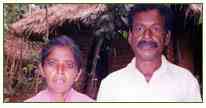

27. Muthuvan
Alternate names: Mudugar, Muduvan
Population -11213 Literacy 10.49%
Muthuvan are found in Idukky and Eranakulam districts. They are believed to be migarated from Madurai in Tamil Nadu. The Mudugar people seen in Attappadi (Palghat) are considered belonging to the same community but their features are slightly different with darker complexion. Muthuvan are food-gatherers also engage in cultivation especially in cardamom and ginger. Read more about Muthuvan at A Peep into the Tribalscape (10 narrative profiles and travelogues).
28. Mudugar
Population: 9,903
Mudugar are a native people group who live in the Attappadi hills in Palghat district of Kerala, and some in Guddalore, Nilgiris and Dharmapuri District of Tamilnadu. The tribe though often misidentified as Muthuvan or Muduvan, including the Census of India List of Scheduled Tribes, they are a distinct people from Muthuvan (Muduvan) who live in the Anamudi hills of Idukki district. The traditional occupation of the Mudugars is collection and trading of forest products like honey, spices, medicinal herbs and wild foods. Many of them nowadays work as daily laborers or for the forest department as guards and travel guides at the Silent Valley National Park. Most of the tribal settlements in the Attappady hill ranges used to notorious for ganja cultivation and it is said that the many tribals who live in abject poverty are employed by such cultivators.

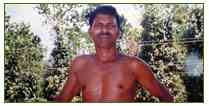
29. Palaiyan
Alternate names: Palleyan, Palliyan, Palliyar, Paliyan
Total population: 1909
The tribal groups known in three names are seen in Idukky district. Their cultures seemed to be a mixture of Tamil and Malayalam traditions. Though all these three names are listed as separate communities in the list of scheduled tribes in Kerala, according to Tribes of Kerala (book by A.A.D. Luiz), all these three names are used for the same tribal community.
30. Paniyan
Alternate name: Paniya, Paniyar
Population: 67,948 Literacy 11.01 %
Paniyas are the largest tribal community in Kerala and are found in Wayanad, Kannur, Kozhikkode, and Malapuram districts. They had been agricultural labourers and worked as slaves of land lords for several decades. They were believed to be brought to Waynad by the king of Malabar, centuries ago as slaves for agricultural labour. It is said that they were sold and bought along with the fields they lived in. After the government of Kerala abolished slavery system, they had been rehabilitated in different colonies set up by the government. Kattupaniyar is a subgroup seen in the forest region of Nilambur (Malappuram District) leading a life style of primitive tribes.
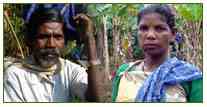

31. Ulladar
Alternate name: Ulladar
Total Population - 11687 Literacy 50 %
Ulladar communities are seen in the forest as well as costal areas. Both these communities are included in the Scheduled Tribes list and are seen in Thrisur, Idukki, Kottayam, Alapuzha, and Kollam districts. Their main occupation of those on the hills used to be cutting trees, collection of fire woods while those who are in the costal area engage in making country boats and it's maintenance. Some of them are also experts in catching turtle with special type of rode (Amakkole). Read more about Ulladar at A Peep into the Tribalscape (10 narrative profiles and travelogues).
32. Urali (Uraly)
Population: 10335 Literacy 50.4 %
Urali tribe is found in Idukky, Kottayam and Kollam districts. Until the recent past, most of them used to live on small huts made on tree tops inside the forest. They are engaged in cultivation and collection of forest produces.
